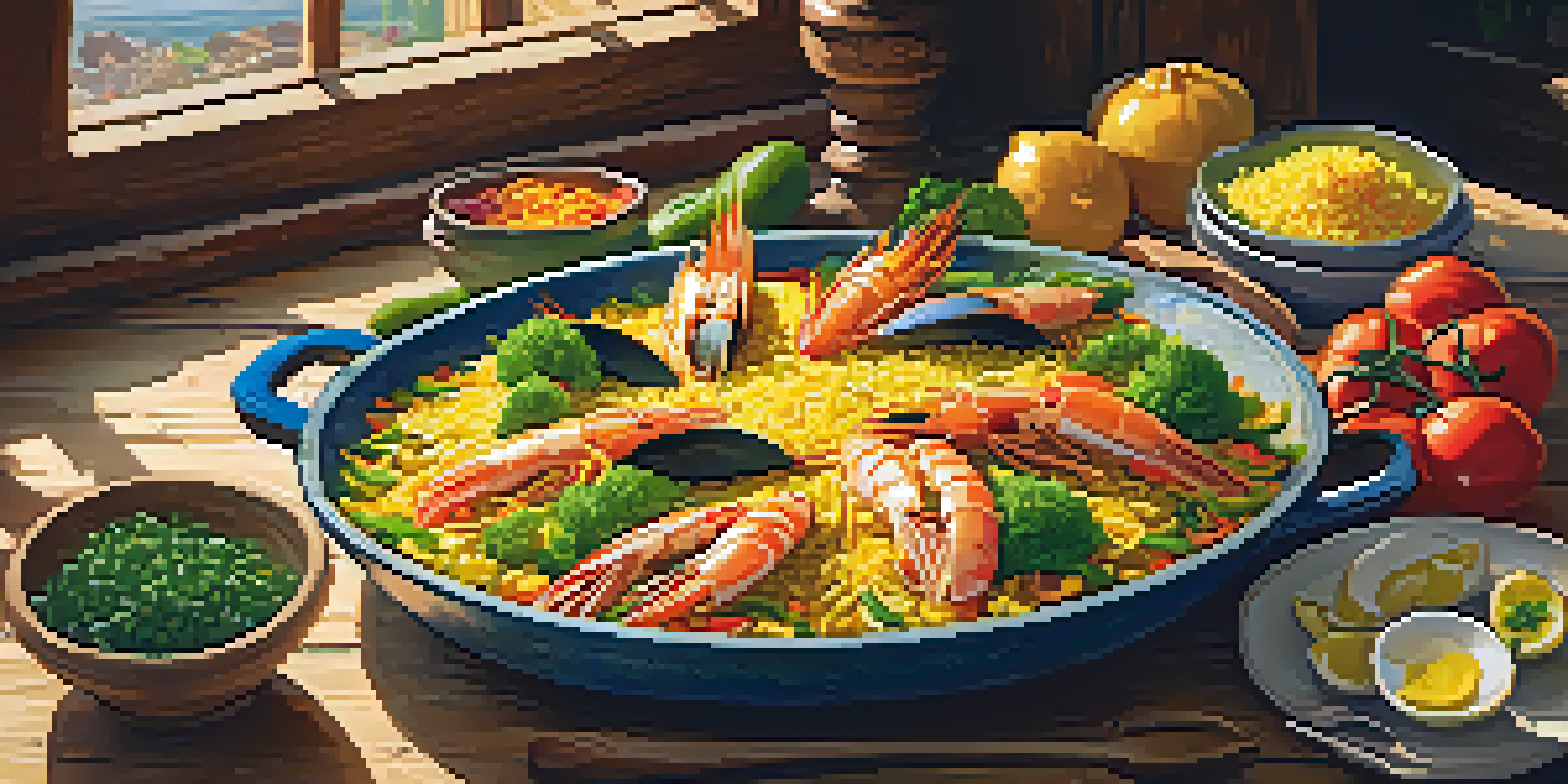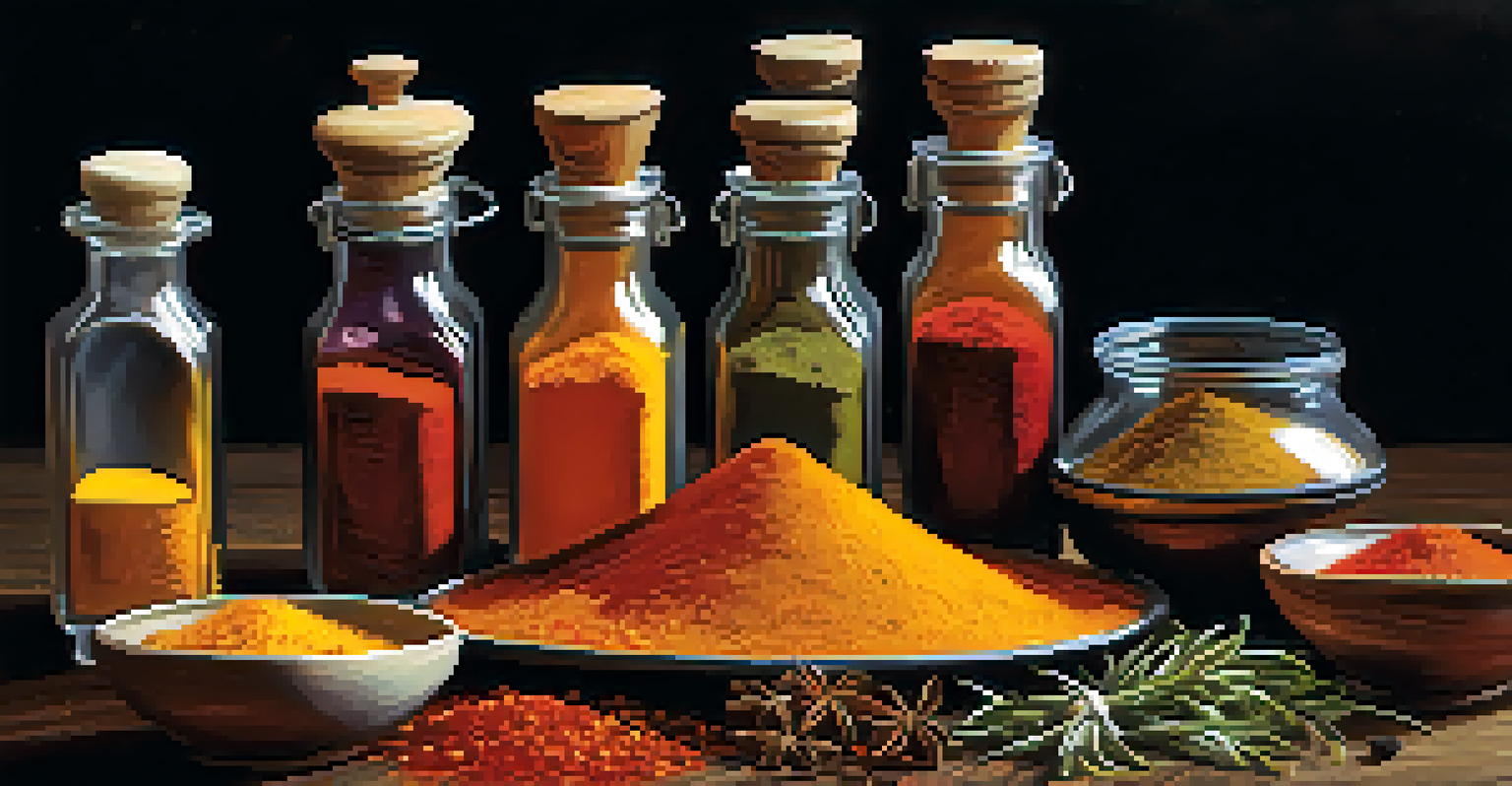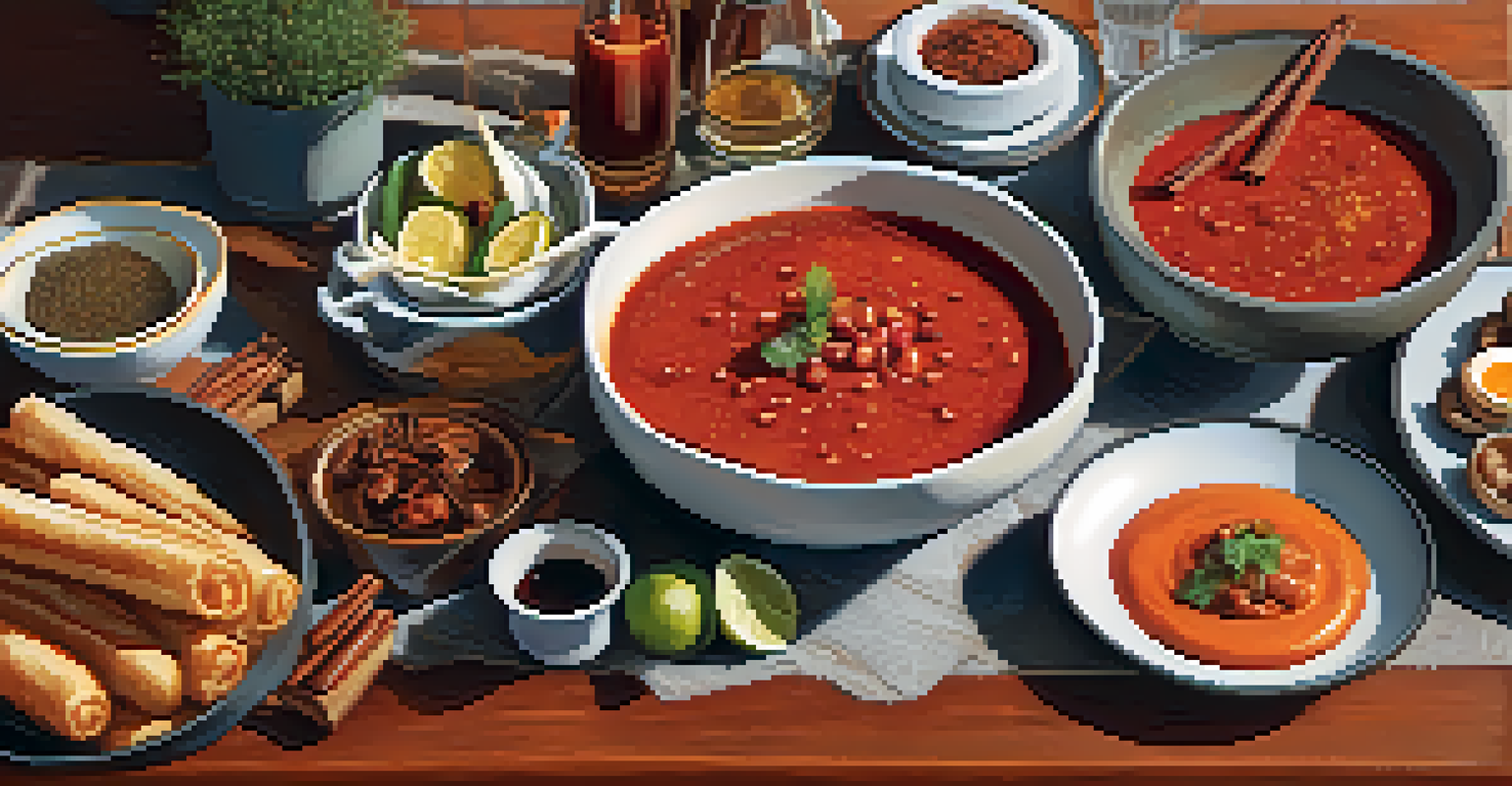The Spice Route: How Spices Influenced Spanish Cuisine

The Journey of Spices: A Historical Overview
The Spice Route was not just a trade path; it was a cultural exchange that spanned centuries. Originating in ancient times, this route connected the East to the West, allowing spices like pepper, cinnamon, and saffron to reach Europe. As these exotic flavors made their way to Spain, they began to weave into the very fabric of Spanish cuisine, transforming simple dishes into vibrant culinary experiences.
Spices are the most important part of our cuisine. They give flavor and character to our dishes.
Spain's involvement in the Spice Route was particularly pronounced during the Age of Exploration in the 15th and 16th centuries. Spanish explorers, driven by the promise of wealth and exotic goods, ventured into the Americas and Asia. This opened up new trade routes and introduced a variety of spices that would soon become staples in Spanish kitchens.
The culinary impact of these spices was profound. They not only enhanced the flavors of traditional dishes but also influenced cooking techniques and presentation styles. Spices became symbols of wealth and prestige, making their way into the homes of both the nobility and the common folk.
Key Spices That Shaped Spanish Cuisine
Some spices have left an indelible mark on Spanish cuisine. For instance, saffron, known for its vibrant color and unique flavor, is essential in dishes like paella. Its use can be traced back to the Moors, who brought it to the Iberian Peninsula, making it a prized ingredient in various Spanish recipes.

Paprika, another cornerstone of Spanish cooking, has a rich history tied to the country's agricultural practices. Originating from the Americas, it was quickly embraced by Spanish cooks, adding depth and smokiness to dishes like pisto and chorizo. Its versatility has made it a beloved spice in Spain and beyond.
Spices Transformed Spanish Cuisine
The introduction of spices like saffron and paprika enriched traditional Spanish dishes, elevating their flavors and cultural significance.
Cinnamon, often associated with sweets, also plays a crucial role in savory dishes. The Spanish use it in stews and sauces, showcasing its ability to balance flavors. This spice, too, came through the Spice Route, transforming culinary traditions and expanding the palate of Spanish cuisine.
The Influence of the Moors on Spanish Spices
The Moors had a significant influence on Spanish cuisine, particularly through their introduction of spices and cooking techniques. Their rule over Spain from the 8th to the 15th century brought a wealth of spices and culinary knowledge that enriched local food traditions. This blending of cultures led to a unique culinary landscape that still thrives today.
Cooking is a journey, and spices are the signposts that guide us along the way.
Spices like cumin and coriander, introduced by the Moors, became integral to Spanish dishes. Cumin, for instance, adds an earthy flavor to stews and bean dishes, enhancing the overall taste profile. The fusion of these spices with local ingredients created a distinctive Spanish flavor that is celebrated worldwide.
Moreover, the Moors’ use of aromatic herbs and spices in their cooking influenced Spanish households. The practice of seasoning food to enhance flavors became a hallmark of Spanish cuisine, allowing for more complex and enjoyable meals. This culinary legacy continues to be evident in modern Spanish cooking.
Spices in Traditional Spanish Dishes
Traditional Spanish dishes are often a harmonious blend of various spices, each contributing to the overall flavor. Take, for example, the iconic dish of paella, where saffron and paprika come together to create a symphony of taste and color. This dish exemplifies how spices can elevate a meal from mundane to extraordinary.
Another classic, gazpacho, showcases the use of spices like cumin and garlic, which add depth to the chilled soup. These ingredients not only enhance the flavor but also reflect the agricultural bounty of Spain, highlighting the importance of fresh produce and spices in Spanish cooking.
Moorish Influence on Cooking
The Moors significantly impacted Spanish cuisine by introducing spices and cooking techniques that are still celebrated today.
Even desserts are not exempt from the influence of spices. Churros, often served with a chocolate dipping sauce, can be flavored with cinnamon, creating a delightful fusion of sweet and spicy. This illustrates how spices have permeated every aspect of Spanish cuisine, making it rich and diverse.
The Modern Revival of Spices in Spanish Cooking
In recent years, there has been a resurgence of interest in spices within Spanish cuisine. Chefs and home cooks alike are exploring traditional recipes while experimenting with new spice combinations to create innovative dishes. This revival is a nod to Spain's rich culinary heritage while pushing the boundaries of flavor.
Restaurants are now showcasing spices in creative ways, blending them with local ingredients to craft unique dining experiences. For instance, chefs are incorporating spicy elements into classic tapas, reimagining traditional dishes for a modern palate. This trend not only honors the past but also invites a new generation to appreciate Spanish cuisine.
Moreover, the emphasis on local sourcing has led to the rediscovery of native spices and herbs. By using ingredients that are indigenous to Spain, chefs can create dishes that are both authentic and contemporary, bridging the gap between tradition and innovation in Spanish cooking.
Spices and Regional Variations in Spain
Spain is a country known for its regional diversity, and this is reflected in the use of spices across different areas. For example, in Andalusia, the abundant use of spices like cumin and paprika is evident in their robust stews and seafood dishes. Each region has its own unique spice profile, making Spanish cuisine a delightful tapestry of flavors.
In contrast, the Basque Country showcases the use of herbs like thyme and bay leaf, often featured in their fish and meat dishes. This regional approach to cooking emphasizes the importance of local ingredients and seasonality, allowing each area to express its culinary identity through spices.
Modern Spice Revival in Spain
Recent trends show chefs reimagining traditional Spanish dishes with innovative spice combinations, blending heritage with modernity.
The regional variations in spice use not only enrich Spanish cuisine but also tell stories of cultural influences and historical migrations. As you travel through Spain, the changing spice landscape offers a delicious insight into the country's diverse culinary heritage.
The Future of Spices in Spanish Cuisine
Looking ahead, the future of spices in Spanish cuisine is promising. As globalization continues to influence culinary trends, Spanish chefs are likely to experiment with spices from around the world while staying true to their roots. This fusion can lead to exciting new dishes that pay homage to traditional flavors while exploring new territories.
Moreover, as consumers become more health-conscious, there is a growing interest in spices known for their health benefits. Ingredients like turmeric and ginger are gaining popularity, and it’s likely that they will find their way into Spanish recipes, enhancing both flavor and nutrition.

Ultimately, the timeless appeal of spices ensures that they will remain a vital part of Spanish cuisine. As chefs innovate and explore, spices will continue to play a critical role in shaping the future of Spanish cooking, ensuring that this culinary tradition remains vibrant and evolving.